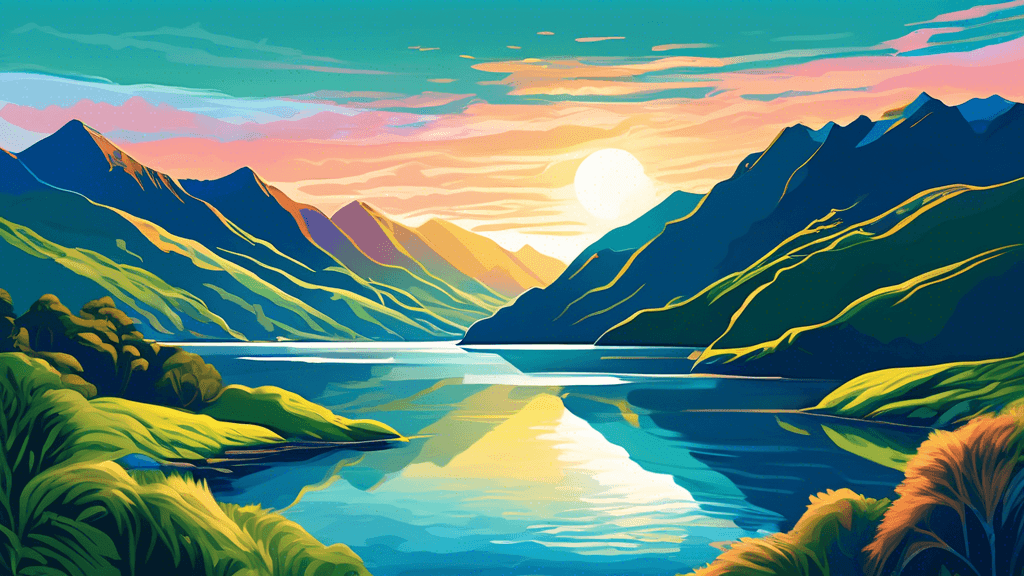
Exploring New Zealand's Landscape: A Blend of Green and Blue in Art
Share
The Intersection of Art and Environment in New Art's New Zealand Landscapes
New Zealand, a country renowned for its sweeping vistas and vibrant natural environments, stands as a canvas of inspiration for artists and photographers around the globe. The unique blend of lush green landscapes and deep blue waters found in this island nation offers more than just a visual feast—it digs deeper into the essence of environmental conservation and the artistic expression it inspires.
Why are New Zealand's Landschips So Unique?
New Zealand's geographical isolation and diverse ecosystems create landscapes that are not only rare but also incredibly varied across relatively small distances. From the fjord-like sounds in the south to the subtropical forests in the north, the range of scenery is startling. Why does this matter for artists and photographers? The contrast in colors, textures, and light provide endless opportunities for creative expression.
New Zealand Through the Lens of Local and International Photographers
Photographers, both local and international, have long been drawn to New Zealand's shores, eager to capture its diverse landscapes. Through their lenses, we see more than just an image; we see a story of time and elements, a silent testimony to the evolving environmental narrative. How do these visual stories influence our perception of nature and conservation? They serve as powerful tools for raising awareness and fostering a deeper connection to the natural world.
- Wildlife conservation efforts portrayed through the untouched habitats documented in photos.
- The challenge of climate change captured through the changing landscapes.
- The cultural significance of natural landmarks highlighted through visual storytelling.
Incorporating Maori Culture into Landscape Art
New Zealand is also unique in its rich Maori culture, which deeply respects and connects with the land. Maori perspectives and narratives are often woven into the artistic portrayal of the landscape, enriching it with a layer of cultural meaning that emphasizes the sacredness of nature. This integration of cultural elements serves not only as a tribute to the indigenous people but also as an educational tool that promotes cultural understanding among viewers.
Exciting Developments in the Representation of Landscapes
With advancements in technology, the way artists and photographers capture and share their work continues to evolve. Drones, for example, offer new angles and perspectives, revealing patterns and details unseen to the naked eye. How are these technological developments changing our relationship with art and nature? They push the boundaries of traditional landscape photography, creating a new norm for how we perceive and interact with nature. Proof of this transformation is evident in the increasing popularity of aerial landscape photography, especially in places as captivating as New Zealand.
Joining Forces for Conservation Through Art
A vital aspect of New Zealand's landscape art is its role in conservation efforts. By showcasing the stunning natural beauty of the land, artists and photographers play a crucial role in environmental advocacy. Their work not only captivates but also educates and motivates the public to take action. Recognized environmental photographer and conservationist, James Frank, remarked, Each photograph is a story of survival. Through my lens, I try to speak for those who cannot speak—the forests, the mountains, and the rivers.
What Can You Do?
If you're moved by the beautiful convergence of green and blue in New Zealand’s landscapes, consider supporting local artists and environmental groups. Purchasing artwork, participating in workshops, and spreading the word about the importance of conservation are all ways you can help. By engaging with these art forms, you contribute not only to the livelihood of artists but also to the broader mission of environmental preservation.
In conclusion, the landscapes of New Zealand are not just subjects for stunning photographs or paintings; they are a call to action—a reminder of the world’s fragility and our role in its stewardship. As we continue to explore and celebrate these landscapes through art, let us also remember our responsibility to protect and preserve them for generations to come.
Are you ready to explore the artful blend of green and blue in New Zealand's landscapes? How can you become a part of this vibrant narrative?





